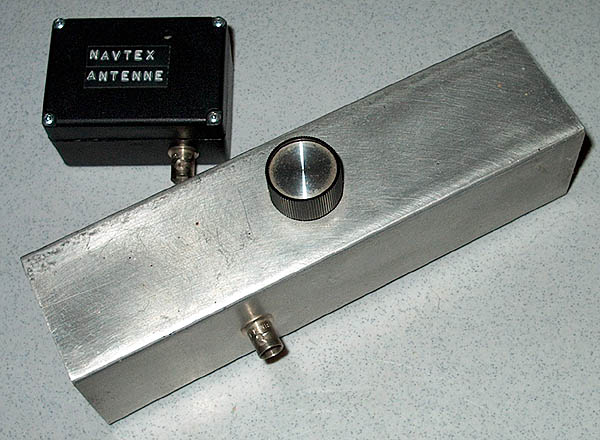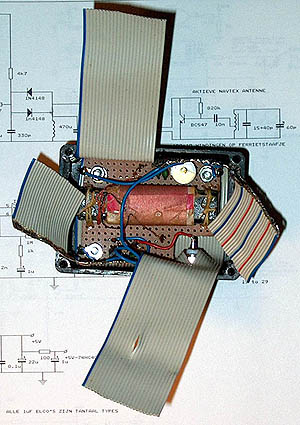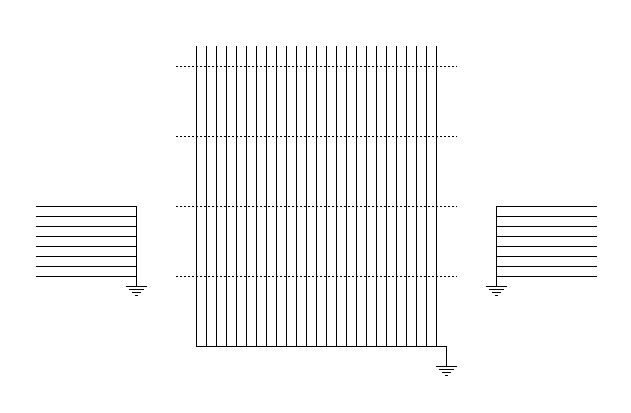
The small black ferrite rod antenna and the big one do both
have a screening for the electric field. But the small one
is much more sensitive then the big one. How is that possible?
A SCREENED FERRITE ROD ANTENNA
(1995)
KLIK HIER VOOR DE NEDERLANDSE VERSIE

The small black ferrite rod antenna and the big one do both
have a screening for the electric field. But the small one
is much more sensitive then the big one. How is that possible?

Without the split in the screening, also the magnetic field
will be screened. The copper on the blue bottom print is broken.

The solution: Screening with flatcable! It is not possible to induce currents in the flatcable. The screening is unfolded here for the photo!. |

The flatcable screening folded up here. |
The solution
The solution was to use flatcable instead of aluminium plate. Flatcable is used in computers for the connections to harddisks etc. The wires of the flatcable are grounded at one side. At the other side, the wires should not make contact to anything, not even to the other wires of the flatcable! In this way, only the electric field is screened and not the magnetic field. As separate wires are used instead of a metal plate, it is not possible to induce currents in the screening. The flatcable is folded up around the ferrite antenna. The ends of the ferrite antenna are also screened with flat cable. That is not possible with a metal plate as you do have a shortened winding then at the end of the ferrite rod.

Schematic diagram, flatcable folded at the dotted line.
The ends are also screened!

The Navtex receiver with RA3AAE mixer
big diagram